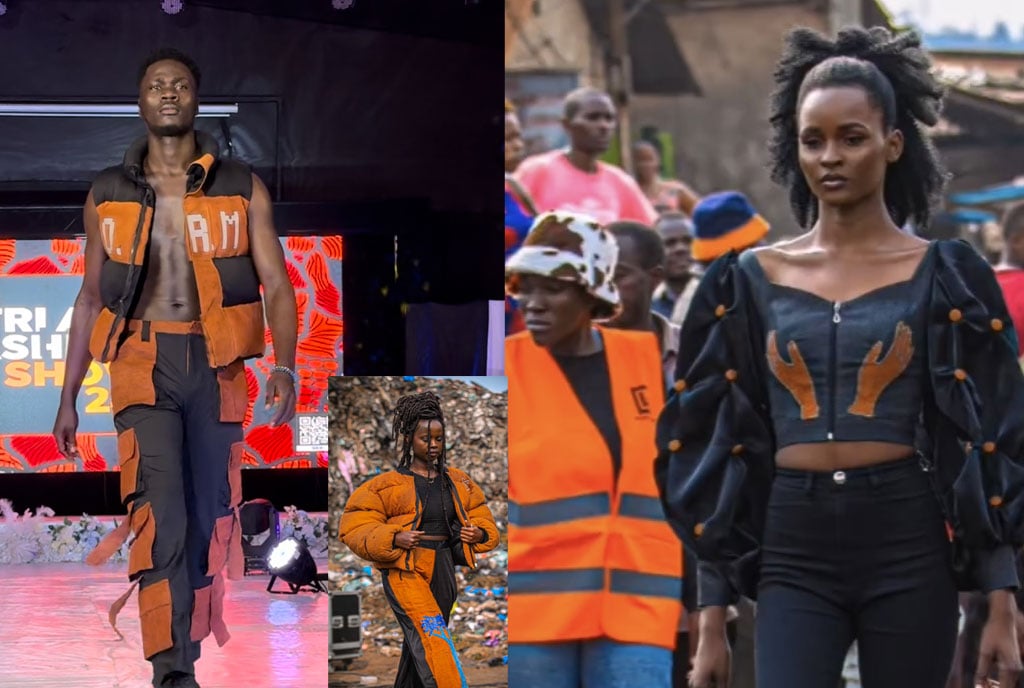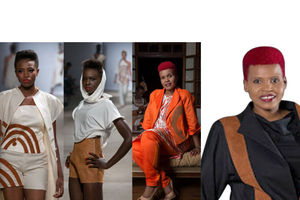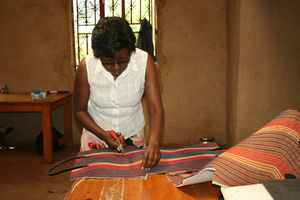
Some of Trevor Simon Peter Kaye’s pieces being showcased in Namuwongo, a Kampala suburb. PHOTOS/ courtesy of kaye.
For many fashion designers, the dream is to showcase their work on major runways in cities such as Paris, Milan, and New York. Ugandan designer Trevor Simon Peter Kaye, however, chose the railway tracks in Namuwongo a Kampala suburb, for his streetwear collection. Kaye brings streetwear to life with locals as his front-row audience. We sat down with him to discuss his brand and his unique use of bark cloth.
Can you tell us about your background and how you got into fashion design?
I am Trevor Simon Peter Kaye, known professionally as Trevor Kaye, or Toreba Kai on social media. I am the artistic director of Kayto Management House (KMH), which oversees three fashion brands: Data Original Streetwear, Orboremi Fashion House, and ORM Streetwear.
My journey began at Old Swinford Hospital Boarding School, UK. Data Original Streetwear started as a General Certificate of Secondary Education (GCSE) art project and gained unexpected popularity. Orboremi Fashion House specialises in formal and bespoke clothing. My inspiration comes from my mother, Tinah Kato who ran a fashion boutique in Entebbe. Encouraged by my art teacher, I continued my education at Central Saint Martins.
After Covid-19, I returned to Uganda and saw a niche for sustainable, culturally infused clothing, leading to the creation of ORM Streetwear. This brand blends Ugandan culture with streetwear, in collaboration with seasoned tailor John Mark Senkulu.
What inspired you to blend streetwear with traditional bark cloth in your designs?
My inspiration came from seeing Jose Hendo’s work with bark cloth at a British Council showcase. I wanted to repurpose bark cloth for everyday streetwear, filling a market gap for sustainable, culturally relevant fashion.
How do your cultural roots influence your design aesthetic?
Buganda culture is deeply embedded in my designs. My collections incorporate traditional elements like the Kanzu embroidery motif into contemporary styles, maintaining cultural heritage while making it accessible to the current generation.
What challenges do you face when working with traditional bark cloth in modern streetwear?
Working with bark cloth is an opportunity which involves balancing modern silhouettes with the unique properties of bark cloth, which is exciting and rewarding.
How do you source your materials, especially the bark cloth?
We source our bark cloth ethically from northern Uganda. Other fabrics are upcycled or made from recycled PET bottles and other repurposed materials.
Could you describe your latest collection and the themes behind it?
“The Transformation”, our latest collection, focuses on the evolution of traditional Buganda clothing into modern fashion. It features garments that transform from one style to another, blending past inspirations with contemporary functionality.
Who is your target audience?
Young fashion enthusiasts and older individuals.
And how do they respond to your fusion of streetwear and traditional bark cloth?
The response has been overwhelmingly positive with customers appreciating the innovative use of bark cloth and the cultural significance of our designs.
How important is sustainability in your design process?
Sustainability is ingrained in the DNA of ORM Streetwear. We demonstrate our commitment through practical application, focusing on fair labour practices, sustainable sourcing, and creating job opportunities in Uganda.
What are your plans for your brand and upcoming collections?
We plan to focus on the day-to-day operations of ORM Streetwear, creating more content and working on collections that resonate with “The Culture.” Our goal is to build a strong brand identity and consumer connection.
What is your advice to designers who want to blend traditional elements with modern fashion?
Understand and respect the traditional elements you wish to incorporate. Research thoroughly, learn the history, and engage with the communities to ensure authenticity. Balance tradition and modernity in a way that honours the past while creating something innovative.
Who are your biggest influences in the fashion industry?
Virgil Abloh for his unparalleled impact and creativity, Kanye West for his philosophy, music, and design, despite his controversial status. Then, Yohji Yamamoto for his avant-garde silhouettes and consistent use of black.



